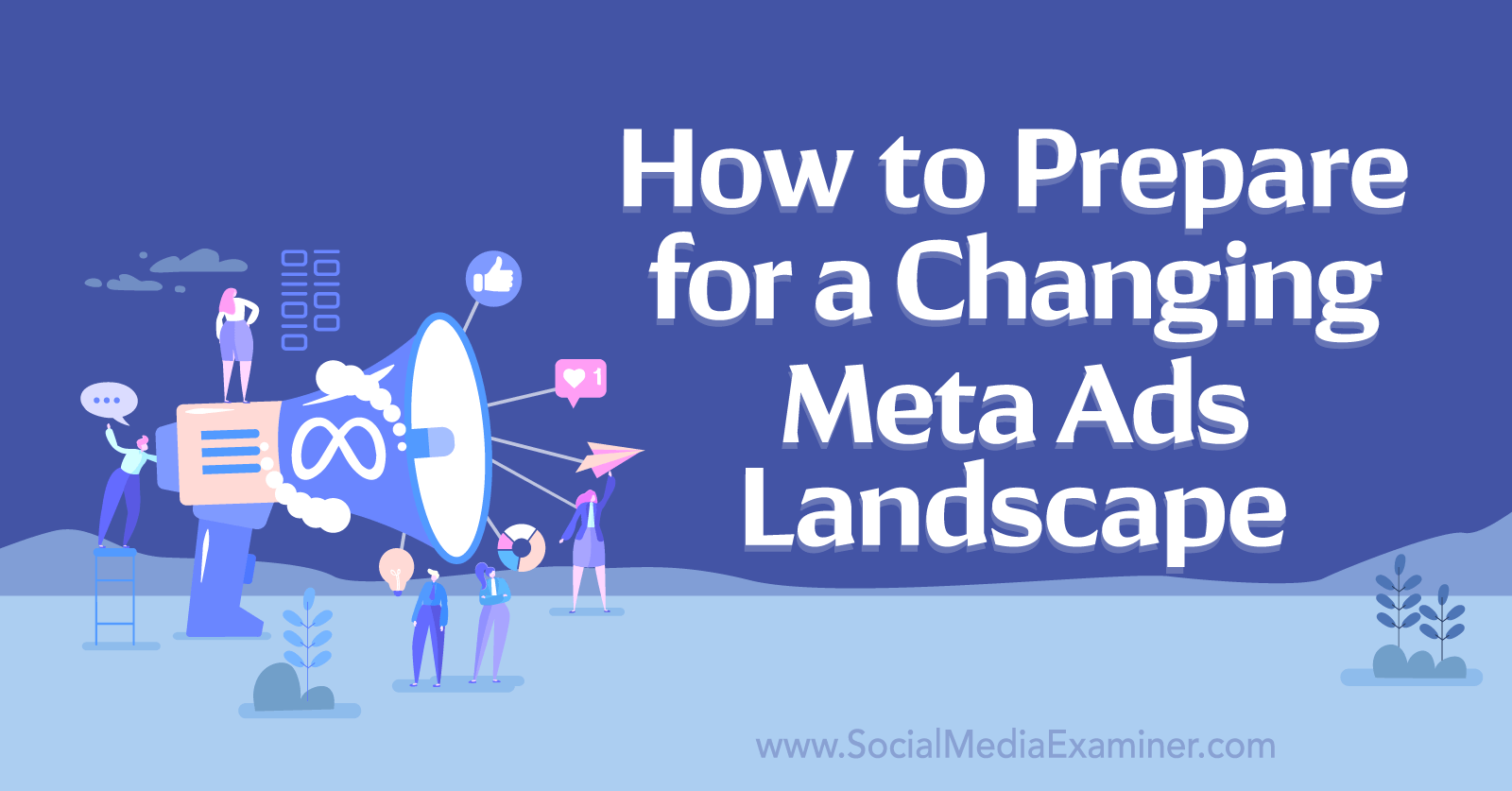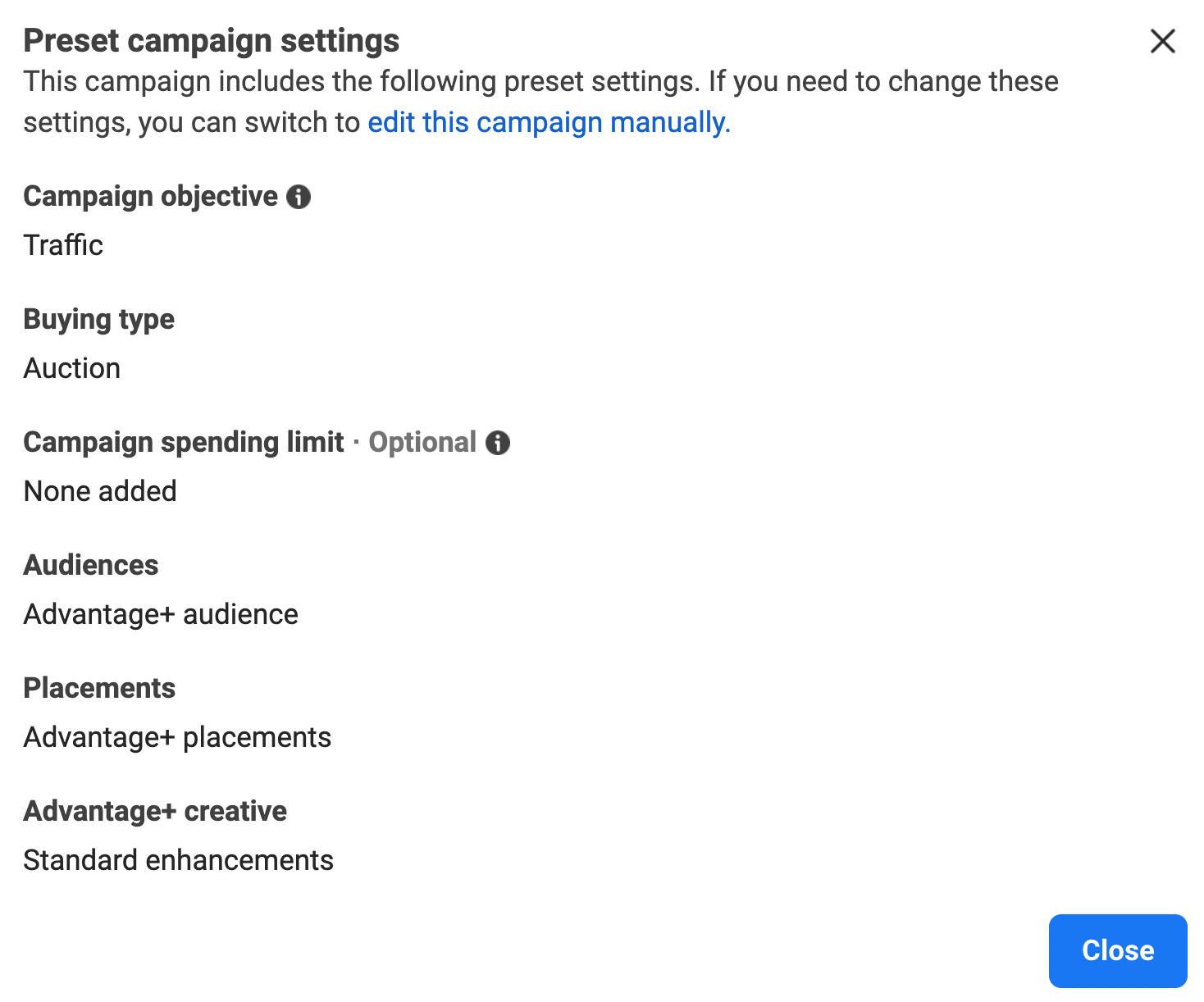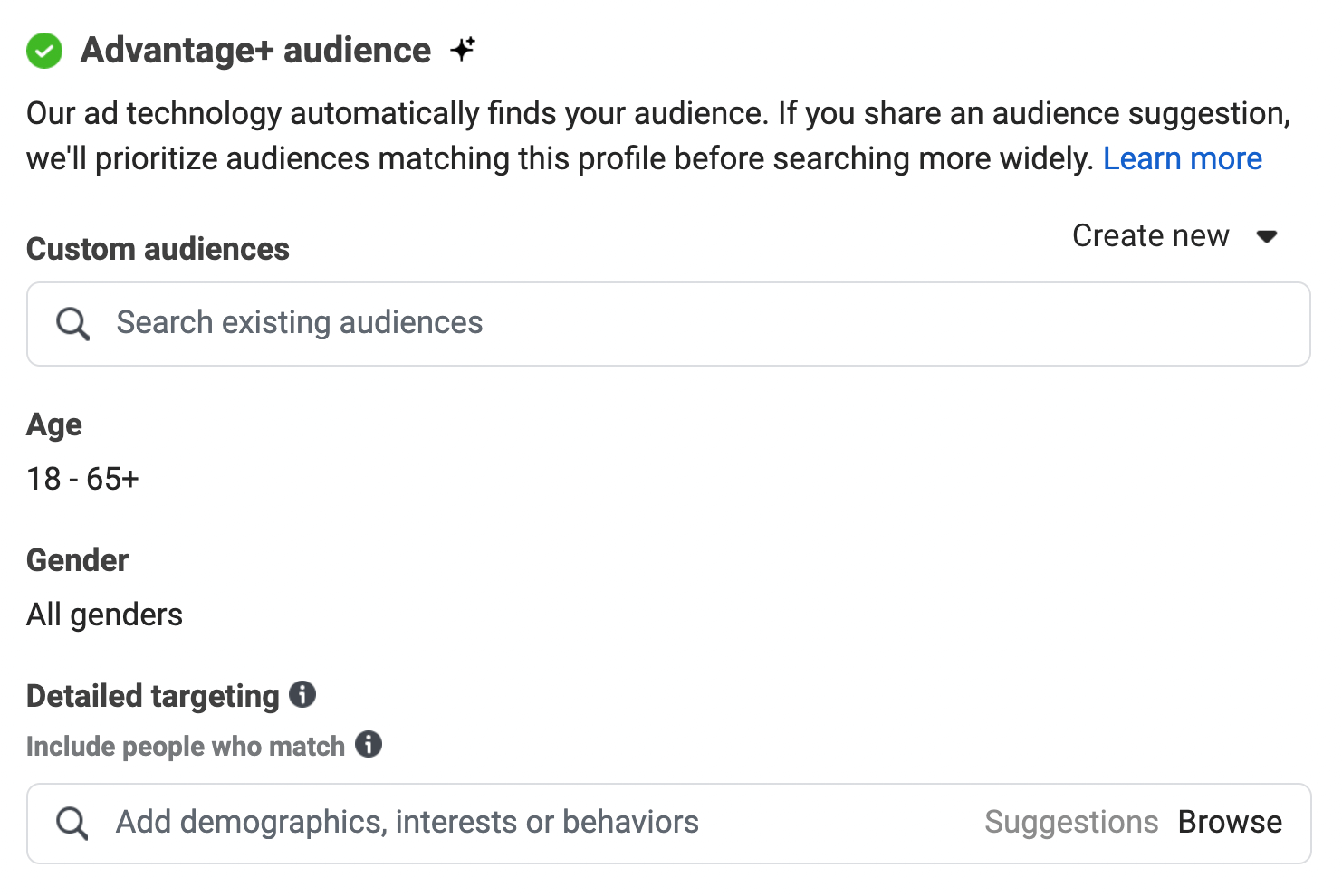Wondering how to adjust your Facebook and Instagram campaigns for the changes coming from Meta? Looking for advice to adjust your audience targeting, placements, and creative?
In this article, we’ll explore how to prepare for the changing world of Meta ads.

What’s Changed With Meta Ads Manager?
The world of digital advertising moves fast, and few platforms evolve as quickly as Meta (formerly Facebook and Instagram) ads. In recent years, ongoing updates have significantly impacted marketers’ abilities to target specific audiences and measure campaign performance.
Veteran digital marketer Jon Loomer breaks down recent shifts in Facebook advertising. He explores critical ad targeting changes, automation growth, evolving attribution needs, video ad trends, and more that are reshaping current practices.
Jon has focused on advanced Facebook ad campaign techniques since 2011, when he launched his website. He blogged extensively, providing immense value to his readers during Facebook's early days.
But when the pandemic hit, Jon struggled, seeing so many people lose jobs and income. His business suffered. As a result, he made a hard change to short-form video in 2022.
He has published over 500 videos across all social media platforms and rebuilt his business. These one-minute shorts focus on Meta ad updates, strategies, and optimization tips rooted in Jon’s hands-on expertise.
Rapid Targeting Shifts
2021’s iOS 14 update was a watershed moment for Meta ads manager. The mobile OS tweak reduced attribution tracking and some interest targeting options. Results became fuzzier. Transparency similarly declined as privacy concerns mounted around Meta’s data practices.
Advertisers' value was finding ideal targeting, but Meta began expanding audiences automatically using artificial intelligence and machine learning to boost results. While benefiting ad spend efficiency, this frustrated micro-targeting devotees. It marked the shift of the self-service paradigm advertisers relied upon.
Meta soon introduced tools like Advantage+ audience and Advantage+ shopping ad campaigns. These products automatically find target audiences based on pixel and conversion data instead of relying on manual targeting.

While these expanded and automated audiences have improved efficiency and proven effective for eCommerce ads, many marketers struggle with the loss of control.
Similarly, in November of this year, Meta began allowing people in the European Union, European Economic Area, and Switzerland to pay for a monthly subscription. This subscription removes ads from user feeds. It also stops Meta from tracking user behavior, addressing major privacy worries.
So, European users can now scroll without seeing ads or being tracked. This is a significant shift in Meta's ad-based business model in Europe.
The Future of Managing Meta Ads
Jon believes that as machine learning capabilities advance, Meta ad campaigns will depend less on human input for targeting and optimization. He predicts advertisers will one day have zero input into targeting.
Get World-Class Marketing Training — All Year Long!
Are you facing doubt, uncertainty, or overwhelm? The Social Media Marketing Society can help.
Each month, you’ll receive training from trusted marketing experts, covering everything from AI to organic social marketing. When you join, you’ll also get immediate access to:
- A library of 100+ marketing trainings
- A community of like-minded marketers
- Monthly online community meetups
- Relevant news and trends updates
Marketers still have the option to target manually if they choose. However, Meta may broadly apply the Advantage+ model across campaign objectives.
The trend is clear, even if the timeline is uncertain. Advertisers will need to embrace automation by these machine learning systems.
Meta is also restricting ad placement options—where your ads show up like in Facebook news feeds, Messenger, and Instagram. These placement options could disappear over time, too. Jon believes that instead of ad placements, the focus will shift to attribution and creative. Attribution means ensuring the tracking is in place for Meta to credit your ads when a conversion happens.
Solid attribution helps optimization so Meta can adjust which users see your ads. As privacy changes continue, accurate attribution will become even more critical.
On the creative side, compelling ad copy and images will remain essential to stand out and inspire your target audience. As ad campaigns become easier to run for anyone, the competition in the auctions increases. Winning those auctions requires excellence in attribution and creative even when targeting options disappear.
Video ads are popular now because that is what platforms prioritize and what users engage with most. But trends come and go. In 5–10 years, Jon believes video may fall out of favor as people get tired of it.
Currently, authentic human-filmed videos tend to outperform AI-generated video ads. When everyone uses the same AI tools as a shortcut, it leads to low-quality, spammy content.
To stand out, marketers should understand the strengths and weaknesses of AI. Using it strategically along with manual effort is better than fully automating everything. Focusing on uniqueness and quality will remain critical as AI capabilities advance, even if targeting and placements rely more on algorithms.
#1: Embrace Changes With Meta Ad Campaigns
Advertisers should actively experiment with broad targeting regularly, not just once, to embrace change. “Because the truth is, if it doesn't work, Meta won't keep using it. I mean, they'll improve it or find another solution, but they need advertisers to be successful, too,” Jon says.
Although Meta does not provide a breakdown differentiating exact audience vs expanded audience results, you can still create two similar Facebook ad campaigns and easily test manual targeting vs Meta's Advantage+ audience. If your budget allows, you can also use broad targeting for a certain amount of time and see how conversions change.
Jon also recommends using Advantage+ placements, which are open for conversion goals. Advertisers limiting where ads show inherently restricts volume and raises costs, handicapping automation.
With Advantage+ audiences specifically, retargeting audiences like website visitors as targeting suggestions. Then Meta can expand from there.
Understanding Meta’s Advantage+ Audience
Meta's Advantage+ campaigns use machine learning instead of manual targeting. The “audience” version starts with your pixel data to find people likely to convert. You can still provide targeting suggestions, but leaving it broad lets the algorithm work.

This is similar to advertisers' old broad targeting method, just less advanced. Now Meta has optimized the AI specifically for broad ad campaigns.
Going too narrow with audiences can increase your costs and limit your spending potential. Expanding reach enables lower CPM and larger budgets.
To transition, try using broad retargeting audiences like website visitors, email lists, or people who have engaged with your posts in the past as suggestions.

Discover Proven Marketing Strategies and Tips
Want to go even deeper with your marketing? Check out the Social Media Marketing Podcast! Publishing weekly since 2012, the Social Media Marketing Podcast helps you navigate the constantly changing marketing jungle, with expert interviews from marketing pros.
But don’t let the name fool you. This show is about a lot more than just social media marketing. With over 600 episodes and millions of downloads each year, this show has been a trusted source for marketers for well over a decade.
It's an adjustment for manual targeters, Jon explains. But the algorithms are often better at finding high-potential people.
Optimizing Ad Copy and Images With Meta's Advantage+ Creative
Meta's Advantage+ creative also uses AI to optimize ad copy and images.
For text, you can provide up to five primary text options, and it will suggest headlines and generate variations. But the AI-written language can often seem off-brand, Jon says, because it can include emojis or different types of language that might sound different from you or your brand.
For images, it can adapt aspect ratios by filling in backgrounds. So, a horizontal photo becomes vertical by adding color on the top and bottom to complete the square. It's not injecting new elements, just extending existing colors. For example, if you have a 16×9 inch outdoor photo, the AI will crop or expand the image and fill in more sky.
Other features include auto-converting images to video or slideshows and applying templates. However, Jon warns the templates usually look bad—incorrect colors and weird text overlays.
The goal is to reduce manual editing for different ad placements. But advertisers dislike inconsistent branding and ugly aesthetics. Still, unappealing visuals get attention.
Jon says it's a lot for advertisers to keep up with. But you can reject enhancements case-by-case. The algorithms still need work on understanding brand identity and quality standards. But capabilities are steadily improving.
Optimizing Video Ads With Meta's Advantage+ Creative
The Advantage+ system also automatically adapts video dimensions, like cropping a horizontal video to fit vertical ad placements.
The enhancements default to on, so you need to disable them manually if desired. You can also set your ad account to auto-apply Advantage+ to all ads.
Meta doesn't show when it makes specific edits or their effect, which makes it hard to measure the impact of these adjustments. The changes are applied randomly, only for some impressions.
Jon believes you can fully trust the algorithm's choices, but the goal is improving campaign results, not just spending. Meta only makes enhancements if it predicts they will increase conversions. Performance determines if people see the original creative or an altered version.
So, while advertisers lack control, the system optimizes itself by learning what versions perform best. Jon recommends turning off anything consistently wrong. Otherwise, take an experimental approach to let Advantage+ try improving your assets.
The key question is whether Advantage+ gives insight into what creative performs best. Currently, there is limited visibility, Jon says.
For text or “dynamic creative elements”, Meta breaks down conversion rates for different headline options. This helps guide what messaging resonates with your target audience.
But for images, there isn't reporting on what specific ones connect with audiences. Meta tests millions of variations of combinations of texts and images, but it keeps the results hidden.
The goal is fully automated optimization, not explanation. You can turn enhancements on and off dynamically at the impression level.
So, while you lack input or control, the platform learns for you in the background. You can provide many options and iterations for Advantage+ to refine through AI experimentation.
#2: Prove Ad Value: Meta's Attribution and Tracking
Attribution means properly connecting your ads to conversions. It is essential for those who use tools like WooCommerce or Shopify.
Robust attribution doesn’t just enable you to assess your ad's performance accurately; it allows Meta’s algorithm to weigh signals and optimize spending.
Jon advocates implementing Facebook pixel events such as key purchases and sign-ups. This captures on-site activity to inform optimization logic. But pixels alone grow vulnerable to disruptions as browsers' firewalls track pixels. So Jon recommends establishing server-to-server conversion’s API data pipelines as well.
Integrating API Pipelines With Meta's API Gateway
The API passes first-party data that is not at risk from changes to browsers or iOS. Jon says the API Gateway is best if you don't already have eCommerce integration because it piggybacks off any pixel event you've created. You can also use Google's Tag Manager to manage your pixels.
However, setting up workflows moving data from advertisers’ site databases into Meta’s API proves prohibitively expensive due to the required cloud infrastructure.
Jon suggests using a more affordable option like Stape, which requires minor setups like DNS records and Meta permissions. Then, the integration pulls conversion data automatically. Using Facebook's free pixel plugin works, too, in a pinch.
By moving conversion data off-site, marketers guarantee Meta receives this first-party data even if pixels get blocked. Jon says this remains unimpeded for now as long as such infrastructures adhere to appropriate data handling transparency and user privacy regulations.
The key takeaway is that the importance of conversion data will only increase as other signals wane or remain obscured through Meta’s aggregation. Jon insists you prioritize piping this intelligence into optimization engines to demonstrate positive ROI.; Otherwise, your spending risks misdirection.
Meta’s ad offerings continue morphing at breakneck speeds. With attribution, targeting, and AI all evolving swiftly, advertisers ride a rollercoaster of iteration. It produces anxiety for many used to more control. But rather than recoil from innovation, Jon suggests leaning in.
While the future remains uncertain, it's essential to maintain an experimental mindset, support algorithmic advances with intelligence, and keep refining the human touch.
Jon Loomer trains and consults advanced marketers on Facebook and Instagram ads to maximize profits through Meta ads manager. His membership is called the Power Hitters Club. You can find him on Facebook.
Other Notes From This Episode
- Connect with Michael Stelzner @Stelzner on Instagram and @Mike_Stelzner on Twitter.
- Watch this interview and other exclusive content from Social Media Examiner on YouTube.
Listen to the Podcast Now
This article is sourced from the Social Media Marketing Podcast, a top marketing podcast. Listen or subscribe below.
Where to subscribe: Apple Podcasts | Spotify | YouTube Music | YouTube | Amazon Music | RSS
✋🏽 If you enjoyed this episode of the Social Media Marketing podcast, please head over to Apple Podcasts, leave a rating, write a review, and subscribe.
Stay Up-to-Date: Get New Marketing Articles Delivered to You!
Don't miss out on upcoming social media marketing insights and strategies! Sign up to receive notifications when we publish new articles on Social Media Examiner. Our expertly crafted content will help you stay ahead of the curve and drive results for your business. Click the link below to sign up now and receive our annual report!
Attention Agency Owners, Brand Marketers, and Consultants

Introducing the Marketing Agency Show–our newest podcast designed to explore the struggles of agency marketers.
Join show host and agency owner, Brooke Sellas, as she interviews agency marketers and digs deep into their biggest challenges. Explore topics like navigating rough economic times, leveraging AI, service diversification, client acquisition, and much more.
Just pull up your favorite podcast app, search for Marketing Agency Show and start listening. Or click the button below for more information.

